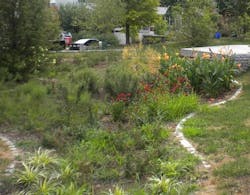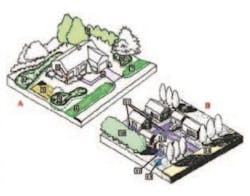NAHB provides builder perspective at White House conference on green infrastructure
Representatives of federal government agencies, states, municipalities, research centers, professional associations, and environmental groups met at the White House in late September to discuss ways to promote green infrastructure solutions for addressing stormwater issues.
As the only organization at the event representing private enterprise — that is, the home-building and construction industry — NAHB took the opportunity to advocate for flexibility and a range of choices when it comes to low-impact development and other green infrastructure solutions.
By participating in the conference, NAHB had an opportunity to express builders’ views that, while rain gardens, narrower streets, pervious pavements, and other green infrastructure techniques can help reduce discharge into municipal sewer systems, recharge groundwater, and often save money for the builder, they aren’t necessarily the best ways to address all stormwater issues.
Instead, NAHB emphasized that the practices chosen for a particular location must depend on soil, slope conditions, or local weather factors, and the goal should be reducing pollution and enhancing stormwater infiltration in the most cost-efficient manner.
These models illustrate common green infrastructure practices and techniques, including use of permeable pavement, cisterns and rain barrels, and tree plantings and expanded tree boxes.
Going forward, conference organizers are expected to produce a white paper as a result of the consensus documents that were developed during the meeting. That paper will be posted on the conference website, which also provides additional information on green infrastructure.
Next year, EPA will be proposing a federal stormwater rule that emphasizes the use of green infrastructure, so NAHB is working to educate the federal agencies about how such techniques perform in “real world” situations and how they affect affordability as well as the need for flexibility.

